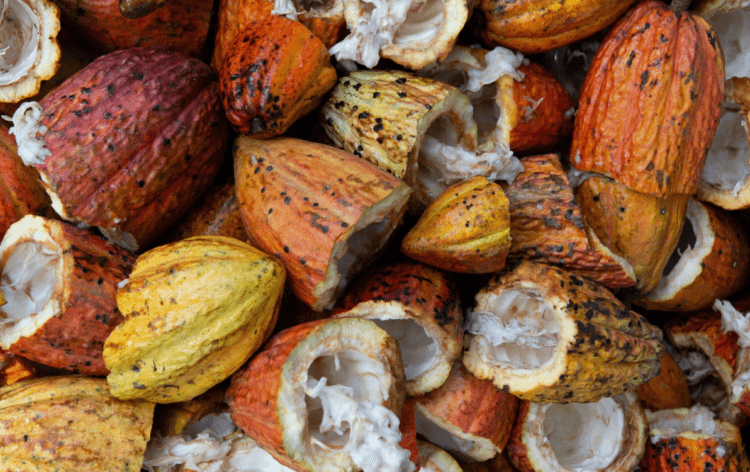Trading Cocoa: Opportunities, Risks, and Market Dynamics

The commodity, which is derived from the cocoa bean, is used to produce chocolate, cocoa powder, and other cocoa-based products. Trading in cocoa has a long and storied history, dating back to the 16th century when Spanish conquistadors introduced cocoa to Europe. Today, cocoa is traded on a number of exchanges worldwide, with the largest being the Intercontinental Exchange (ICE) in London and New York.
In this article, we will delve into the world of cocoa commodity trading, exploring the history of cocoa trading, the major players in the market, and the factors that impact cocoa prices. We will also examine the opportunities and risks associated with investing in cocoa, and provide insights into how traders can navigate this dynamic market.
Trends and Features You Will Face on Cocoa Commodity Market
Cocoa is one of the most traded commodities in the world and is an essential ingredient in the production of chocolate, which makes it a valuable and popular commodity. The cocoa commodity market has several features, trends, and top players that traders should be aware of to make informed trading decisions.
The cocoa commodity market is an extremely liquid market, and the trading volume is high. The market is driven by supply and demand factors, and the price is subject to fluctuations due to weather conditions, political instability, and economic factors. The supply chain of cocoa involves several intermediaries, and traders need to be aware of the complexities of the market.
Cocoa prices have been trending upward in recent years, driven by rising demand for chocolate and cocoa-based products. Additionally, the increasing popularity of organic and fair-trade chocolate has led to a higher demand for sustainably sourced cocoa, which has also driven up prices. The global pandemic has also affected cocoa commodity trading, with disruptions in the supply chain causing supply shortages and price volatility.
The top players in the cocoa commodity trading market include large chocolate manufacturers such as Nestle, Mars, Hershey, and Cadbury. These companies are heavily involved in the cocoa market and use their considerable market power to influence prices. Additionally, trading firms such as ADM, Cargill, and Olam International are significant players in the cocoa market and control a large portion of the supply chain.
Additionally, trading can be a profitable venture for traders who have a good understanding of the market dynamics and can navigate the complexities of the supply chain. However, like all commodity trading, cocoa trading is subject to price fluctuations and market volatility, which can result in significant losses.
Cocoa prices are subject to significant fluctuations due to supply and demand factors, weather conditions, and political instability. In recent years, cocoa prices have been on an upward trend due to rising demand for chocolate and cocoa-based products. However, the pandemic has caused significant disruptions in the supply chain, leading to price volatility and supply shortages.
Risks that Cocoa Include
While cocoa commodity trading can be a profitable venture, there are several challenges that traders can face. Here are some of the main troubles that traders can encounter:
- Price volatility: Cocoa prices are subject to significant fluctuations due to supply and demand factors, weather conditions, and political instability. Traders need to be aware of these factors and have a solid risk management strategy in place to minimize losses.
- Complex supply chain: The supply chain of cocoa involves several intermediaries, including farmers, processors, traders, and exporters. Traders need to be aware of the complexities of the market and the supply chain and understand the risks involved.
- Political instability: Cocoa is mainly grown in developing countries, and political instability can disrupt the supply chain and cause price volatility.
- Weather conditions: Weather conditions, such as droughts or floods, can significantly affect cocoa production, leading to price fluctuations.
The amount of money needed to invest in cocoa commodity trading varies depending on the trader’s strategy and the size of the position they want to take. The current market price dictates the cost of purchasing cocoa commodities, and this price can be volatile. To buy cocoa, traders have the option to purchase standardized amounts through cocoa futures contracts, which are traded on major commodity exchanges such as the Intercontinental Exchange (ICE) or the New York Mercantile Exchange (NYMEX).
To minimize risks while trading with cocoa, traders should:
- Stay informed about market trends and news: Traders need to keep track of market trends and news that can affect the cocoa market, such as weather conditions, political instability, and demand from chocolate manufacturers.
- Develop a risk management strategy: Traders need to have a solid risk management strategy in place to minimize losses. This can include using stop-loss orders or setting price targets.
- Diversify their portfolio: Traders should diversify their portfolios to spread their risk across different commodities and minimize the impact of price volatility.
- Choose a reputable broker: To safeguard their investments, it is crucial for traders to select a trustworthy broker who possesses a strong regulatory framework and an excellent track record.
In conclusion, while cocoa commodity trading can be a profitable venture, traders need to be aware of the risks involved and have a solid risk management strategy in place. Price volatility, a complex supply chain, political instability, and weather conditions are some of the main challenges that traders can face. By staying informed, diversifying their portfolio, and choosing a reputable broker, traders can minimize their risks and maximize their profits.


























Comments (0 comment(s))